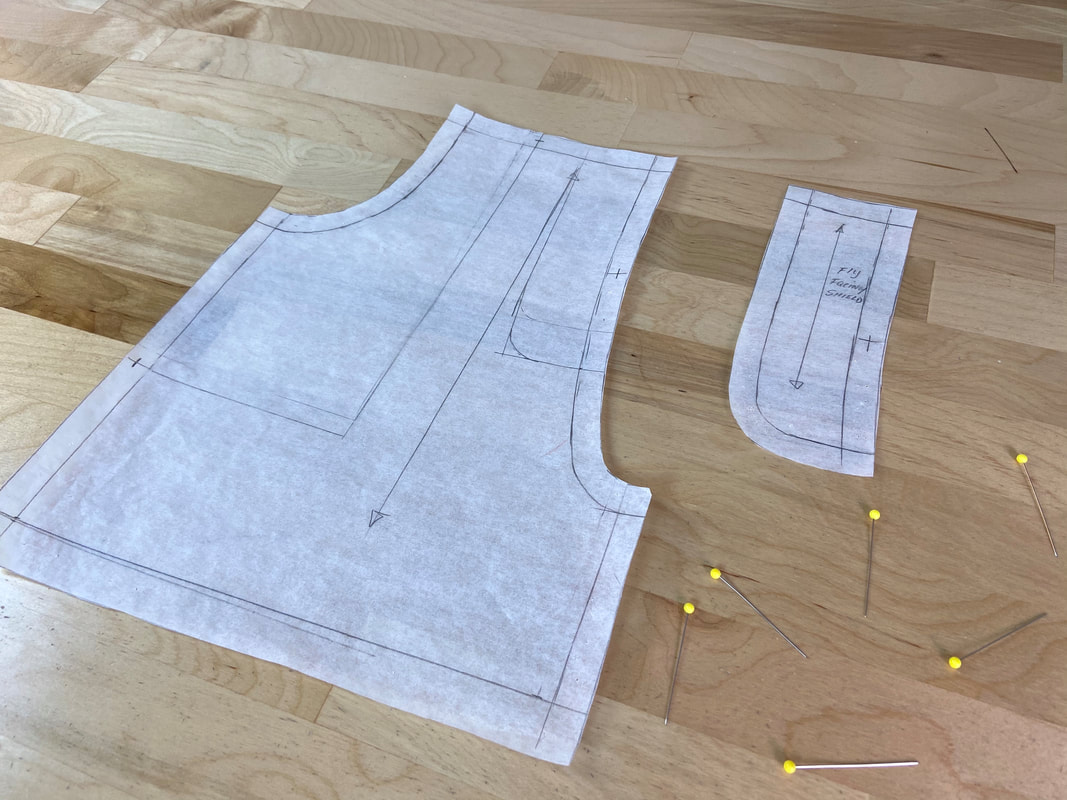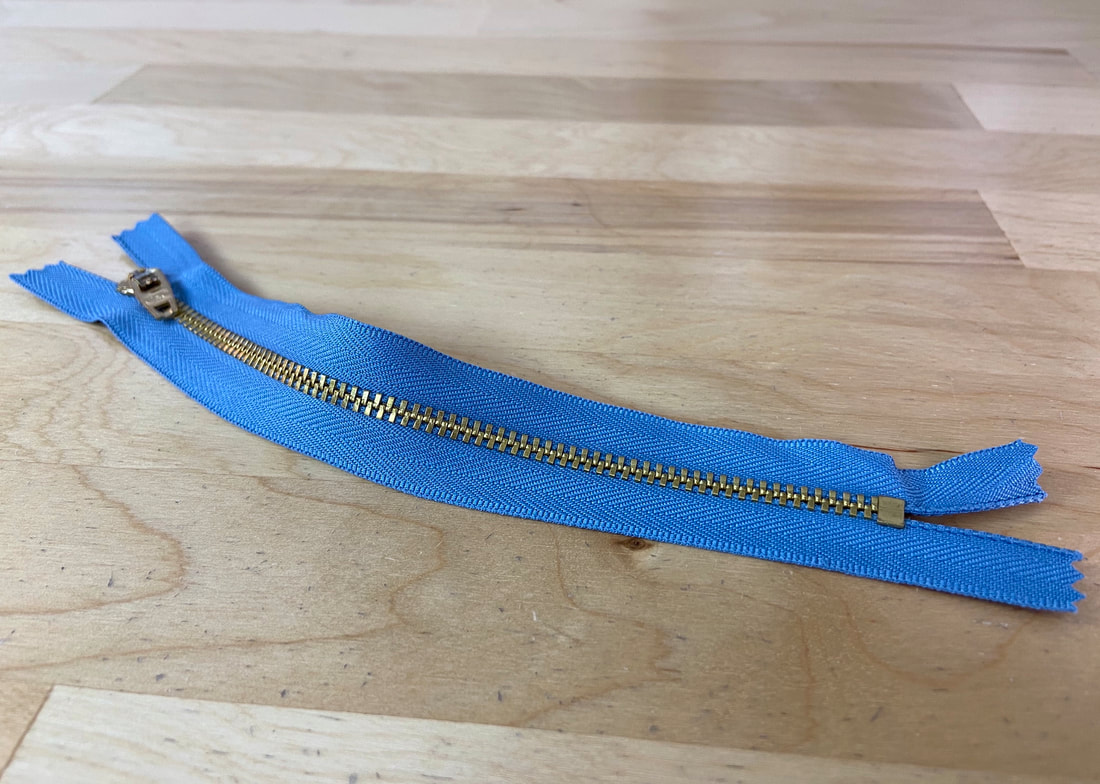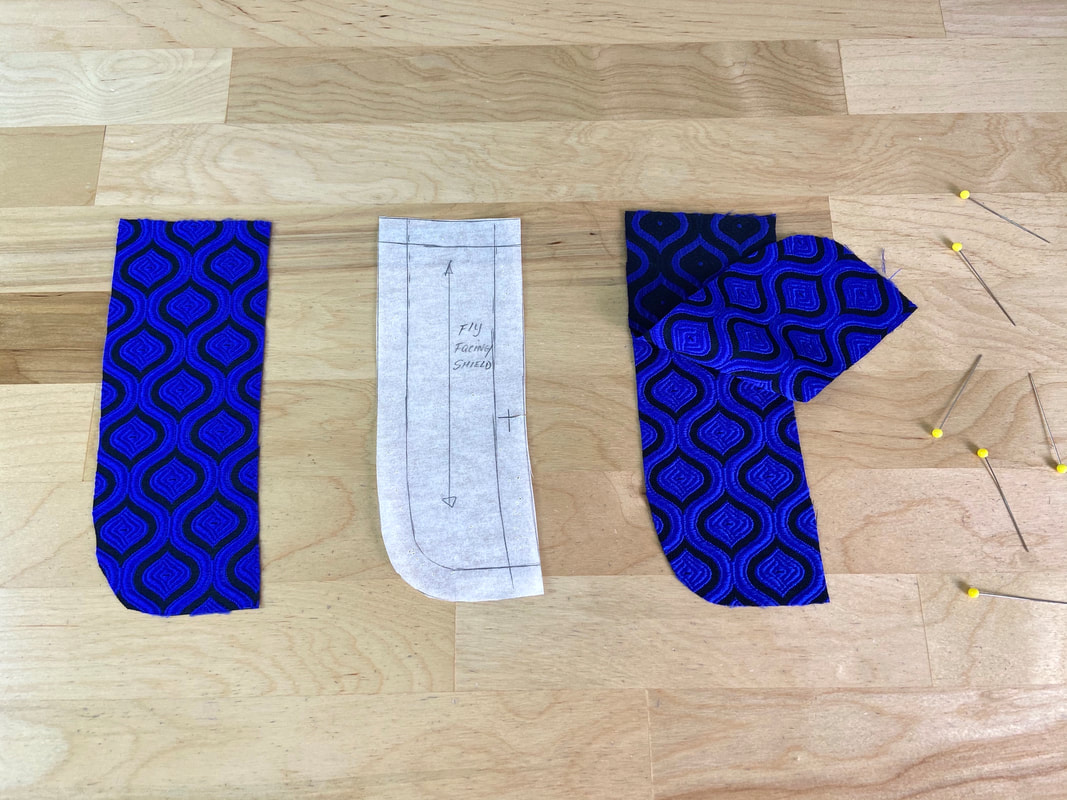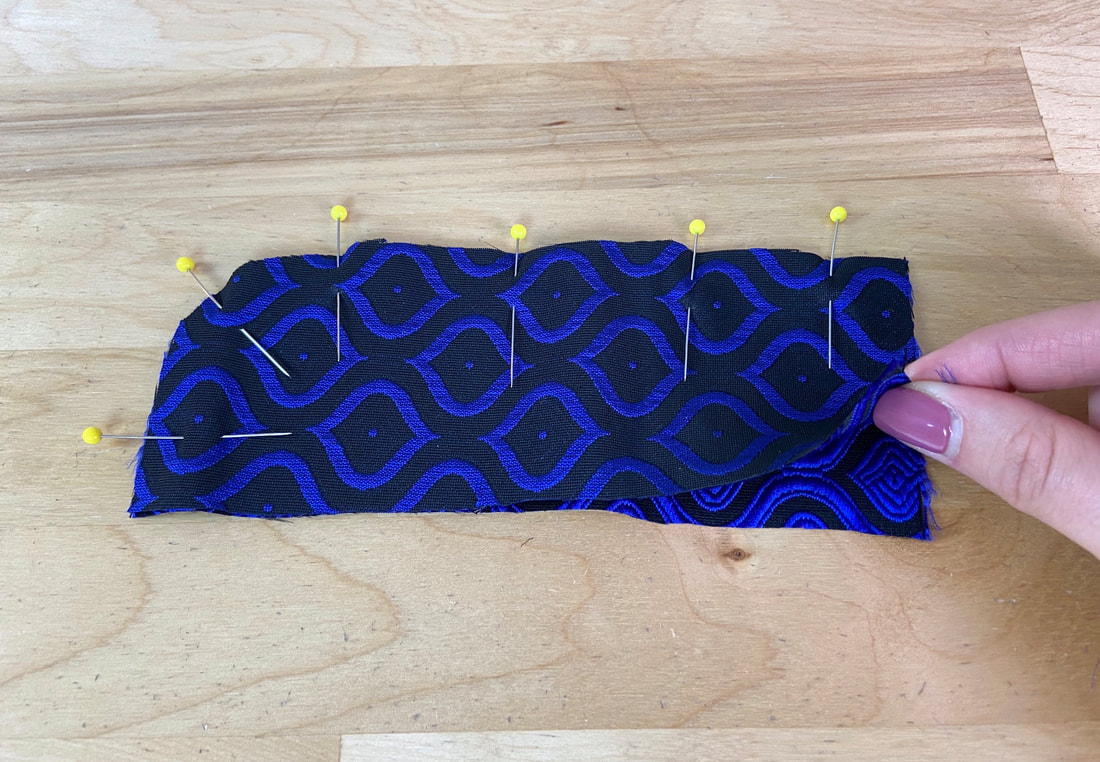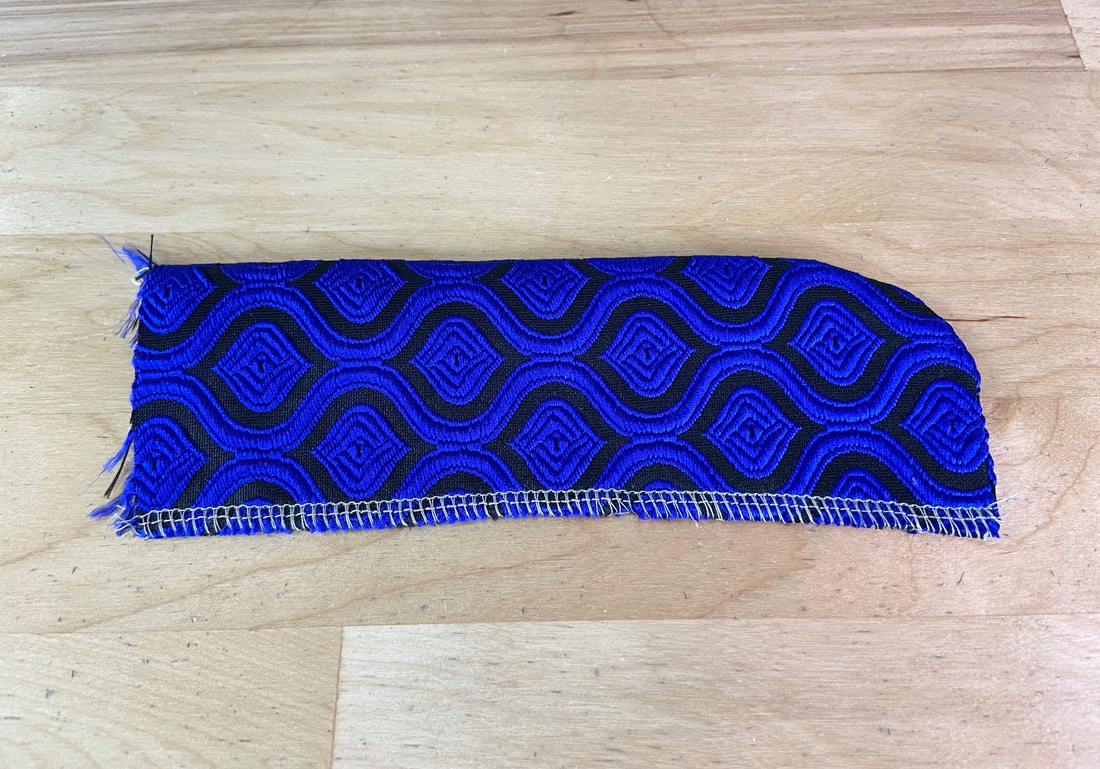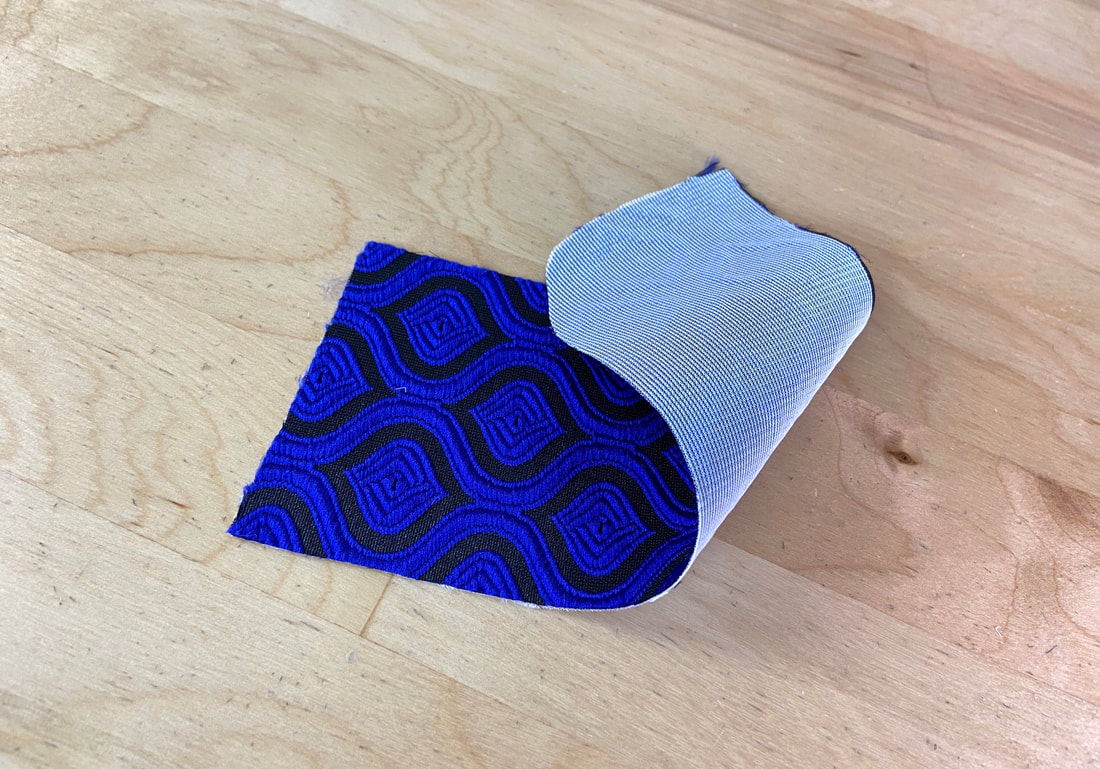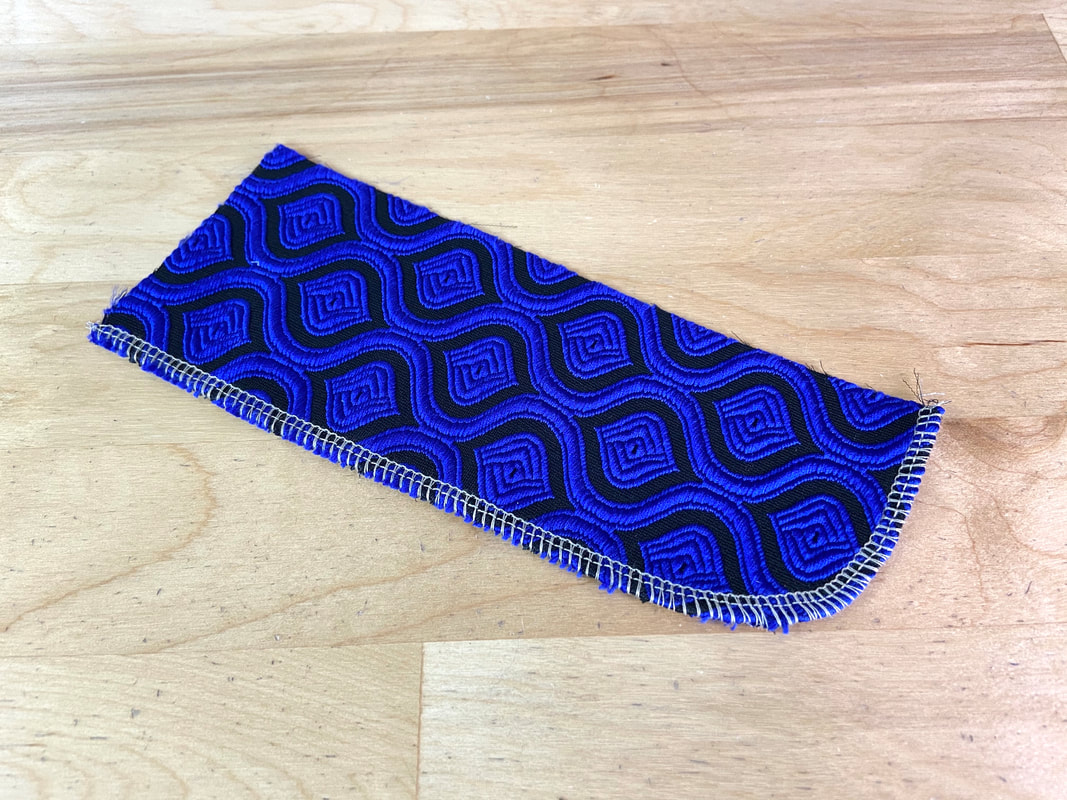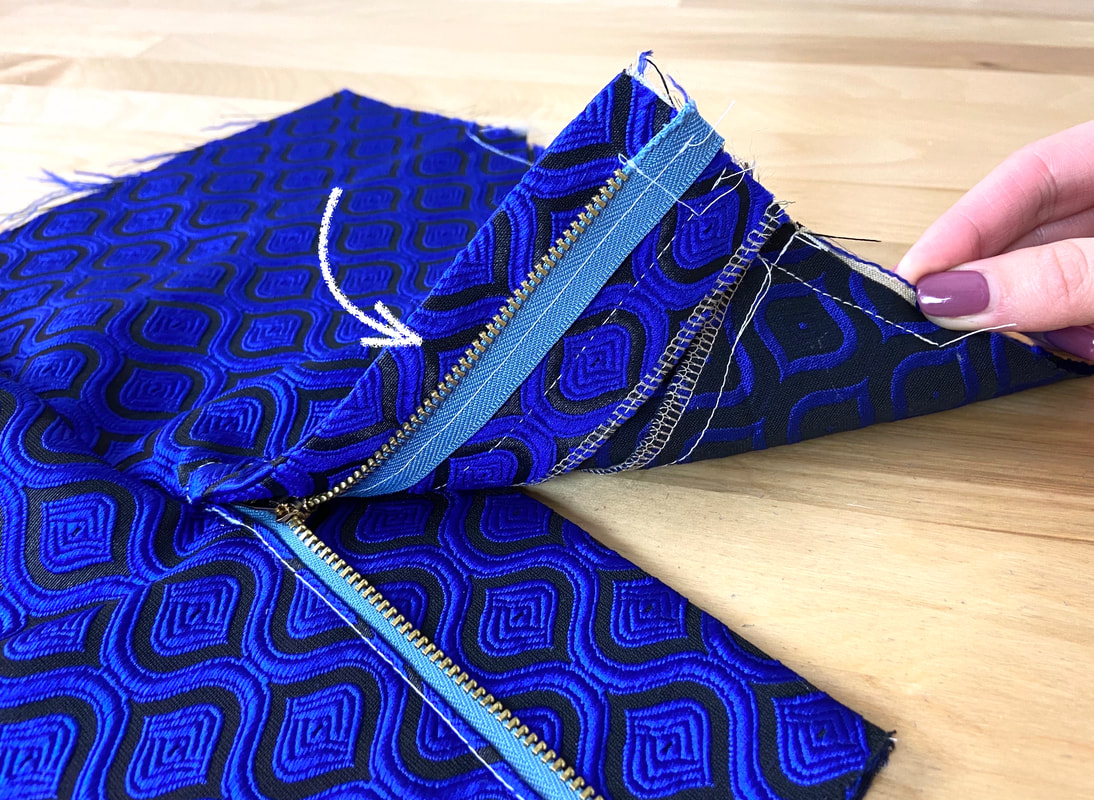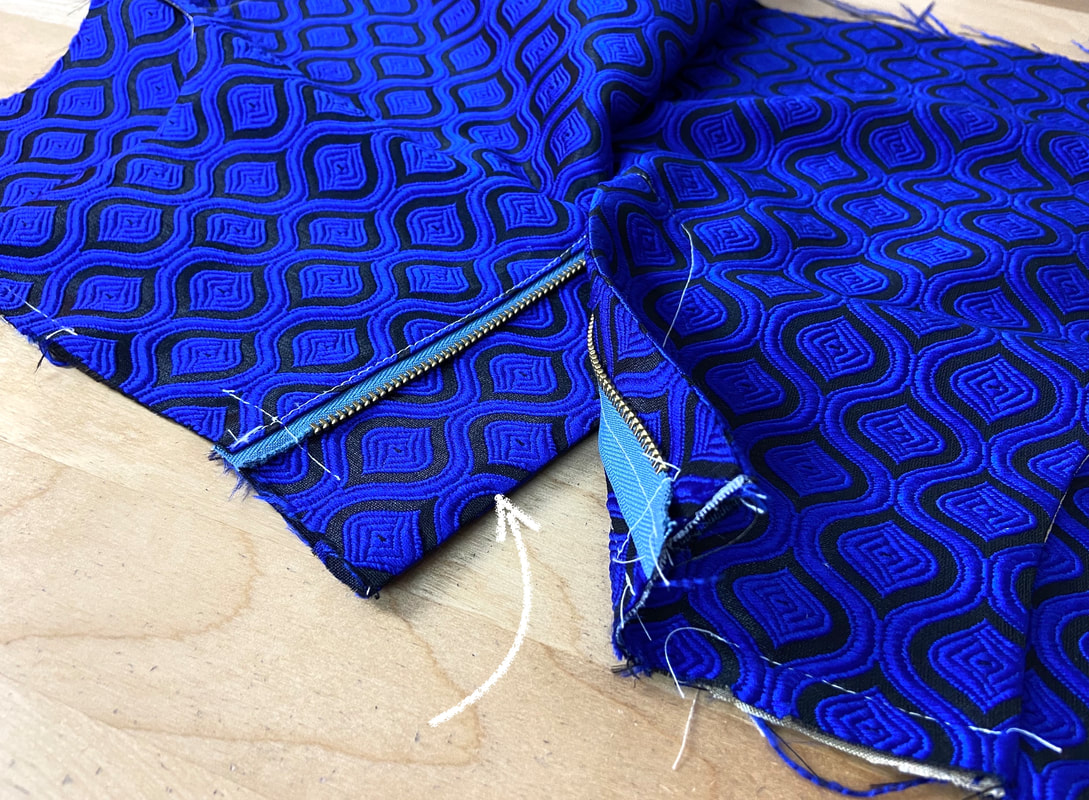Understanding A Fly-Front Zipper's Components And Its Corresponding Sewing Patterns
Fly-front zippers are perhaps one of the very few zipper applications that require sewing patterns. Although at first glance, it may appear confusing and complicated to sew, once you understand its components and the purpose each one serves, you should be able to intuitively construct a fly front zipper.
A fly application is used as a front closure on casual bottoms like trousers, skirts and shorts. To construct it, you'll need two important components: a fly facing and a fly shield. In most cases, a single pattern piece serves both as the facing and the fly shield. Other designs require a separate pattern for each.
In the image above, a single pattern used for both the fly shield and facing is drafted from the front crotch seam. This seam starts off as a straight line at the top (which is where the zipper is attached) and extends into a semi-curved edge as it moves downward.
In the image above, a single pattern used for both the fly shield and facing is drafted from the front crotch seam. This seam starts off as a straight line at the top (which is where the zipper is attached) and extends into a semi-curved edge as it moves downward.
A fly application has a shorter opening requiring a zipper that is only about 5" in length (plus or minus 1"). Metal chain zippers are used as they are wider and provide a heavier duty application.
Conventionally, the fly shield is constructed of two fabric layers. Conversely, the facing is a single layer that is interfaced and clean-finished along its outer edges.
If you are using the same pattern to cut both the facing and the shield, you should cut two pieces (mirror image of each other) for the fly shield and a single piece for the facing. Use the same pattern to also cut a single layer of fusible interfacing which will be adhered to the wrong side of the facing layer for added structure.
Note: If you are working with separate patterns for the facing and fly shield, follow the instructions provided in your pattern set as these may vary.
If you are using the same pattern to cut both the facing and the shield, you should cut two pieces (mirror image of each other) for the fly shield and a single piece for the facing. Use the same pattern to also cut a single layer of fusible interfacing which will be adhered to the wrong side of the facing layer for added structure.
Note: If you are working with separate patterns for the facing and fly shield, follow the instructions provided in your pattern set as these may vary.
The fly shield is a double layer compartment that is attached to the wrong side of the zipper application to provide a protective barrier between skin and zipper teeth.
A fly shield can be constructed of two separate pieces usually featuring a curved bottom edge as shown in the image above. It can also be self-finished by folding a single fabric layer in half. In this case, the bottom edge will remain straight.
Before attaching the fly shield to the fly zipper application, all its edges except the top horizontal one, should be clean-finished.
A fly shield can be constructed of two separate pieces usually featuring a curved bottom edge as shown in the image above. It can also be self-finished by folding a single fabric layer in half. In this case, the bottom edge will remain straight.
Before attaching the fly shield to the fly zipper application, all its edges except the top horizontal one, should be clean-finished.
The fly facing is usually cut from a single fabric layer often featuring a curved bottom. The facing is used to clean-finish the zipper placket opening. Interfacing it provides some much needed structure and strength in the completed zipper application so it is important not to skip this step.
If you take a look at an open fly, you should be able to easily spot the fly facing and fly shield. The facing is located on the wrong side of the zipper placket (shown above). There should be a seam that connects the facing to the garment at the placket edge.
The fly shield is the double layered portion located at the very back of the zipper opening. When the fly is open, the shield appears as an extension located underneath the zipper teeth. On the wrong side of the application, the fly shield should completely cover the zipper teeth/tape when the zipper is in closed position.

